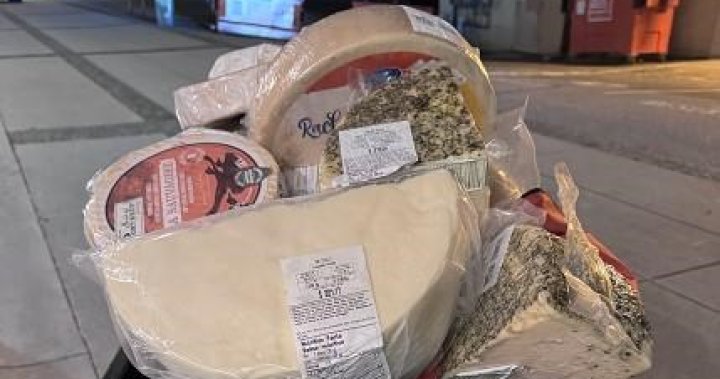The rising cost of food, particularly staples like cheese and butter, has fueled a surge in food-related thefts across Canada, impacting both large grocery chains and smaller specialty stores. This wave of pilfering isn’t solely driven by individual desperation but also by organized crime groups exploiting the black market for profit. The evolving nature of these crimes requires businesses to invest in enhanced security measures and rethink their loss prevention strategies. The impact on business owners, like Joe Chaput, co-owner of Vancouver’s les amis du Fromage, is significant, both financially and emotionally.
Chaput’s experience exemplifies the growing concern among retailers. While his Kitsilano location experiences minimal theft, his East Vancouver store is subjected to periodic waves of cheese heists, forcing him to allocate a substantial $5,500 per month for security guards during the holiday season, along with an additional $5,000 investment in upgraded video surveillance. The targeted items are not random; thieves gravitate towards the more expensive cheeses, mirroring trends seen in other retail theft scenarios. Their tactics, including avoiding customer interaction and seeking out less trafficked areas within the store, suggest a deliberate and often planned approach to stealing.
Law enforcement agencies across the country are corroborating the anecdotal evidence from business owners. The Royal Canadian Mounted Police (RCMP) in North Vancouver, for example, recovered $12,800 worth of stolen cheese from a single incident, highlighting the potential scale of these operations. Sadly, due to improper storage, the recovered cheese had to be discarded. Further emphasizing the trend, police in Guelph, Ontario, have investigated numerous butter thefts over the past year, with some incidents involving losses exceeding $1,000. The quantities stolen in these cases – often multiple cases – strongly suggest a connection to black market resale.
Experts like Sylvain Charlebois, director of Dalhousie University’s Agri-food Analytics Lab, point to two distinct categories of food theft perpetrators: individuals driven by economic hardship and organized criminal networks. The latter, operating with established distribution channels, identify profitable goods like cheese and butter and target them strategically. The emergence of a robust black market for these commodities is a direct consequence of escalating food prices, providing a lucrative outlet for stolen goods. This organized approach differs significantly from theft motivated by personal need and presents a more complex challenge for law enforcement and retailers.
The evolving nature of retail theft necessitates innovative solutions. While technological advancements like electronic tags exist, their widespread adoption for everyday items like butter and cheese remains limited. The historical reluctance of grocery stores to openly address theft, fearing negative publicity and consumer alarm, is gradually fading as the problem becomes increasingly pervasive. Building awareness about the magnitude of the issue and promoting dialogue between retailers, law enforcement, and the public is crucial for effective prevention and response strategies.
For business owners like Chaput, the emotional toll of dealing with constant theft adds another layer of complexity. Beyond the financial burden of security measures and lost inventory, the stress of managing these incidents detracts from the core aspects of running a business – customer service, employee management, and the overall enjoyment of their work. Chaput’s proactive approach of enhanced customer service as a deterrent, while commendable, underscores the challenging environment retailers face. He aptly captures the sentiment of many, acknowledging the exhaustion that accompanies the ongoing battle against theft while striving to maintain a positive and welcoming atmosphere for legitimate customers. The escalating problem necessitates a multi-pronged approach involving both proactive loss prevention measures and addressing the underlying socioeconomic factors contributing to food insecurity.

